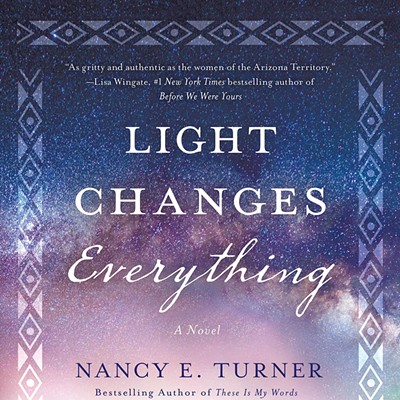Your imaginary "Jeff Hartley" had to be a quiet, uncomplaining "C" student. He'd prefer motorcycle magazines to Milton, but he could be tipped toward good reading if the piece was right. To be "right," the piece would need to have something special--color, energy or a hook; a memorable character, edgy tone or a surprising twist; it would need to engage. If a Hawthorne, Hurston or Lahiri had that "something" and passed the test, it was guaranteed to spark literary interest in other young minds.
That test came to mind reading D. Seth Horton's new anthology of literary fiction, New Stories From the Southwest. And not all of these stories would pass that test's adult equivalent.
Tucson resident Horton, a former Sonora Review fiction editor, selected 19 stories from more than 200 North American journals published in 2006. His criterion was that the stories "illuminate some aspect of life in the Southwest." They all succeed in that, and it's gratifying to see a collection that represents the real Southwest.
Most of the writers in the collection are writing instructors in university settings. Their stories are well-crafted; the writing is polished. It's coolly objective, often ironic, and generally character-focused, not action-driven. Some of the central characters are working-class; few are cultural minorities. As the writers' sensibilities behind the voices are clearly refined, their appeal is not to the round-the-clock ESPN set.
More's the pity. The stories range from forgettable to memorable. The forgettable end would include the deadly earnest story "Passage," which sets its protagonist in a desert setting, a Nazi-like concentration/death camp for homosexuals. Irony or satire could have served its purpose more effectively. Equally problematic is the very short, this-story-has-no-clothes "Imagining Bisbee," in which Colorado writer Alicita Rodriguez experiments with creating a Bisbee that "often does not appear on maps."
But there are pleasures to be had reading the "memorable end" pieces.
Junior kudos are in order for Tucsonan Clarinda Valenzuela, a Ha:San Preparatory High School ninth-grader, whose poem "Tas A:ga" ("Ode to the Sun") opens the collection.
And (regrettably, posthumous) kudos are due to Matt Clark, a young Louisiana State University creative-writing program coordinator. His "The Secret Heart of Christ" demonstrates nimble wit, creativity and originality. It's a self-annotated essay of a story. Beginning one paragraph with, "This is not a story," and the next--nearly identical--with, "This is a story," Clark slips back and forth between truth as fact and truth as fiction, between essay and story, commenting on his writing, addressing the audience and spinning narrative as he goes.
Setting proves significant in all the pieces. The Clark story takes place in culture- and landscape-rich northern New Mexico. The blistering, baking, draining heat of the desert shapes others. Drought becomes an action catalyst in S.G. Miller's notable and disturbing "Old Border Road."
"Old Border Road" creates a mood shot through by dust and drought--baked earth on the ranch where it takes place, dry stream beds, dust coating everything. This all reflects the central aridity of family spirit leeching out the essence of the 19-year-old recently married into it. Miller has rendered the characters featureless in this landscape. (They're even nameless: the young bride refers to her husband as "Son," to her father-in-law as "the old man." The old man calls her "Girl"; Son comments without humor, "Incest is best.") One story that's multicultural, affecting and imaginative--Toni Jensen's "At the Powwow Hotel"--combines a little Indian magic with family loss. Opening "when the cornfield arrived," Jensen jerks the audience right into a suspension of disbelief. From then on, she weaves a tale of Native Americans in West Texas isolation, and culture imagined through the ages. The piece appeals, because it expresses what seems to be genuine emotion that has universal resonance. The writers Horton cites as founders of Southwestern literature--Edward Abbey, Scott Momaday, Leslie Marmon Silko, and Rudolfo Anaya--cast beyond "literary" in reading-market appeal. The best of the "new voices" in this collection (also including Marcela Fuentes, Dennis Fulgoni, Tom McWhorter, and Kathleen de Azevedo) share qualities with them. At a time when fiction itself seems fragile, these are the kinds of voices that could help keep the spark of literary fiction glowing outside the academy as well. We look forward to more of them in the next version of New Stories From the Southwest.








